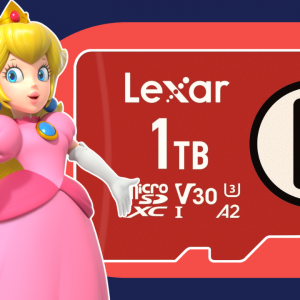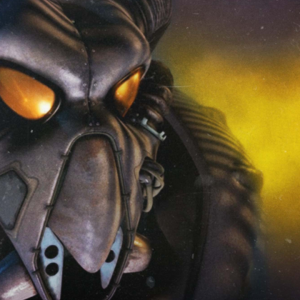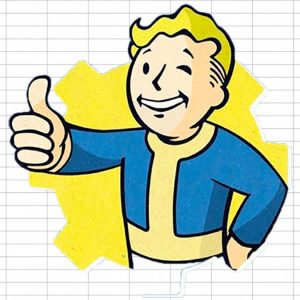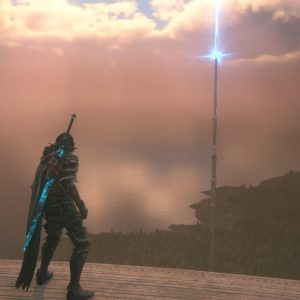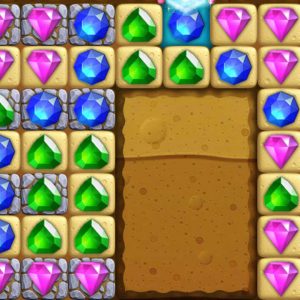I sometimes hide disappointment behind a meek observation that, well, “it isn’t for me,” but I’m sure that Dauntless developer Phoenix Labs’ life sim role-playing game Fae Farm, out on Switch and PC on September 8, is for me. Calm and uncomplicated “cozy gaming” is heavily associated with women, I’m one of those. Fae Farm, in which you play a traveler who’s chosen to travel to a distant island in order to restore it, is washed in fairy magic, and I like that. I love Robert Redford in Barefoot in the Park, I spend too much money on my haircuts—I’m just like other girls.
Fae Farm disrespects that, then, by being a duplicate of almost every major life sim game that came before it, acting like all other girls want is copycat farming mechanics and obligatory marriage.
Fae Farm is overly familiar
Seeming to anticipate my irritation, my custom character won’t stop giggling in the, I will say, pleasantly representative creator. I test out a few different skin tones from Fae Farm’s abundant options, and she’s laughing. I weigh the merits of space buns over braids while scanning the hijab and turban styles, and she chuckles unremittingly. Oh my God. I select “Silent” when it’s time to pick a voice. I can already tell this game is going to patronize me.
Not that it needs to. Fae Farm borrows all its important elements from the king of modern cozy gaming, Stardew Valley, and from the genre’s 1997 mothership Harvest Moon, so I’m walking into a recurring dream.
Like in those games, creating and maintaining neglected farmland makes up part of my daily routine, as does interacting with Azoria island (I rename my town and homestead to a body part of my choice, but I can’t edit the island’s name) shopkeepers to buy useful or decorative items, like little glass bottles of health-restoring potions, wallpaper embellished with butterflies, and a peasant dress I routinely reinvent by dying it different colors.
My neighbors offer me both main story quests, all plainly stated in a graphic on the left of my screen, that let me access new parts of Azoria’s map, but I return to them for additional side quests that lead me to new gameplay features, like bastard bunny Cottontail creatures I can buy and bring home to harvest their excess cotton. Island residents also help me acquire and upgrade skills I’ve mastered in other life sims like Disney Dreamlight Valley, Dinkum, and Hello Kitty Island Adventure: fishing, mining, bug-catching, and cooking.
Fae Farm is less coquettish about those things than other games are. They aren’t really “minigames” here, though you can complicate things by strategically holding A to sneak up on a bug instead of impulsively approaching, and fish will tug your line, turning it taut and red, before allowing you to snag them. Most of the time, though, if you see a tiara-topped queen bee and want to document it in your almanac, as long as you swing, it’s guaranteed to end up in your net. If a woozy rainbow starburst, which can signal rarity, instead intrigues you to a brawny fish’s shadow deep underwater, you only have to cast a line, and the fish is likely yours for dinner.
Pre-order Fae Farm: Amazon | Best Buy | GameStop
Easy mode, welcome in
In part, this effortlessness is what makes Fae Farm’s life sim activities appealing. Everyone already knows that real world chores can be hard, and they can feel hard to start. Why not pick up your Switch, leave your mind on the table far away from you, and be instantly full among the ladybugs?
I get it, I like escapism and low-dose edibles, too. But I’m growing skeptical of heirloom cozy game escapism—the fishing, mining, bug-catching, etc. It’s starting to feel pre-chewed and insulting, the expectation that I’ll pay another $60 and put in another 100 hours into a game I’ve already played in a dozen other forms.
I’m extra disappointed, then, that I’m not a fairy, the one Fae Farm aspect I’d hoped would set it apart from the rest of the farming sim milieu. But, while magic helps me clear purple weed tangles, which are identical to Disney Dreamlight’s Night Thorns, no one in town speaks of fairies during my 13-hour playthrough, and I never reach the mainline quest that unlocks fairy wings, which enable double-jump. Their empty slot in my outfit editor taunts me.
I witness, instead, how wild magic has turned stray objects like pocket watches, wagon wheels, and treasure chests into enemies–fanged “jumbles” which snap while I explore the Saltwater Mines, one of three dungeon systems in the game. I whack them with my magic staff and avoid their area-of-effect attacks, the path of which are revealed in the few seconds before they’re executed, to shake out the resources they drop, like raw gems and lumber.
Aside from these jumbles, though, there is rarely any satisfying conflict in this game. I upgrade my tools to more durable copper relatively early on, after acquiring tons of nuggets in the multilevel Mines, where floors don’t permanently unlock until you’ve gotten enough metal to smelt a seal. These seals also unlock fast-travel portals, or wayshrines, located throughout Fae Farm’s map, but I mostly travel by diving into the ocean (an action that, amusingly, refills my watering can) and bouncing on springy, purple mushroom tops.
With my improved copper sickle, I’m able to conserve energy while amassing plant fibers with which to feed my Cottontail, or while I crack open beech tree stumps to craft other homestead decor, some of which can interestingly augment my max health, stamina, or blue mana meter. I hit a glittery rock with one swing, and a cascade of citrine floods my inventory.
Very quickly, stuff starts taking over my Fae Farm life. It’s partially my fault—I can’t help myself from collecting seashells and all kinds of other garbage to sell, eat, or build with. I make it a habit to trek to the central market at least once a day (unlike other sims, there’s no penalty for staying out late; at midnight, you’re teleported to bed like you’ve always been well-behaved), to unload up to 32 items onto a set of tables, at which everything sells overnight.
But even after upgrading my inventory and buying an additional market stall, I feel overburdened (over-padding your backpack doesn’t encumber you in-game, however; only losing a large chunk of health or staying awake past 11 p.m. can make your character sluggish). I’m constantly finding recipes for new furniture, like a stamina-boosting, “relaxing cozy” bed, or a mana-improving, “inspiring cozy” crystal ball. And I unlock crafting stations to form processed materials, like a loom I use to make fabric for clothing. But I run out of space to carry all the materials I need to make them. I get stuck in a loop of collecting items, discovering recipes, but not having enough inventory space to fill them; I then drop some items in order to gather a different, more specific set of items. In the end, I have a wooden fence. I start wondering what’s the point.
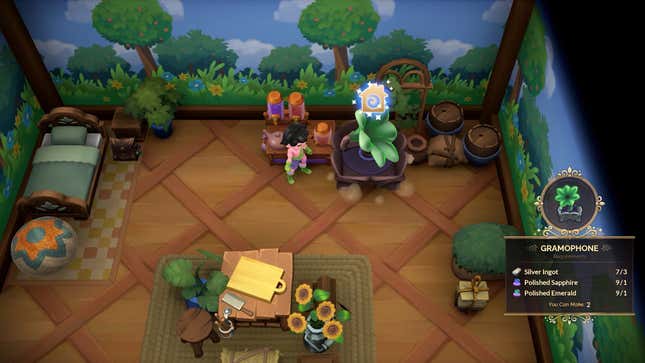
What’s the point?
I’ve been considering how the “girl games” I grew up with—things like fairy-sprinkled massively multiplayer online game Pixie Hollow—compare to games from around that time marketed to men, like Dead Space or Guitar Hero. It’s belittling, in hindsight, that shared human experiences like triumph, tears, and “Everlong” by Foo Fighters were implied to be things that only men could really understand, could really relate to in a game. Girls are too simple to accept anything other than Tinkerbell wearing lipgloss, games said then.
But, you know, I like guitars, too. I thought everyone knew that, but I’m realizing, with Fae Farm, that games still see women—now a major demographic—as blank, easily satisfied consumers.
I think the imitative content I already mentioned speaks to that point, but I don’t find any Fae Farm quality as offensive as its allowing you to date and, ultimately, marry one of your empty shell neighbors, all of who repeat generic dialogue when engaged in conversation: “Thanks, I’m glad you were able to clear out those thorns,” “I’m looking forward to planting my spring crops,” “I love watching the blossoming trees in spring.”
With dialogue this unsexy, it feels like Phoenix Labs added dating elements to its game because that’s what you do in a game like Stardew Valley, and that’s what women like.
I’m ready to move on from that. Women aren’t so undemanding, and neither is the cozy game genre in 2023. Other relaxing games, including this year’s Cosmic Wheel Sisterhood and A Space for The Unbound, use soothing genre characteristics, like repetitive actions and hushed music, only to provide a downy pillow at which to explore more complex, more human themes, like gender identity, trauma, and love. And they do it successfully.
I’m over seeing girls’ cuteness being understood as their obedience—to social expectations, to men’s interpretation, whatever—and I don’t need Fae Farm following suit by serving us hollow chocolate bunnies, something easy to eat. Other modern cozy games have already demonstrated that the genre can handle emotional depth, and I prefer that to the worn-out Harvest Moon picnic blanket. We can wrap ourselves in something more prickly, life sims’ primarily female audience is certainly capable of complexity. Women like more than flowers and marriage. We contain multitudes. It’s not a big deal.
Pre-order Fae Farm: Amazon | Best Buy | GameStop
